The regulation and protection of frequencies used by wireless audio systems is a key issue for Shure. Prakash Moorut, who oversees international frequency regulation and based at Shure’s headquarters in Chicago, and Guillaume Mascot, who is responsible for the French, Asian and European markets, together with Thomas Delory, explain the importance of their work for audiovisual professionals.
Referred to by the generic term PMSE Audio (Program Making and Special Events), wireless technical equipment (wireless microphones, in-ear monitoring systems, command systems and wireless cameras) is an essential and indispensable service for the CCI (Cultural and Creative Industries) sector.
With growth of 10% over the last five years and a 46% share of total revenues in France generated by music, performing arts and visual arts, the overall value of the CCI sector in Europe reaches €253 billion (or 1.7% of EU GDP), and it employs 8.4 times more people than the telecommunications industry.
This economically important role means ensuring that PMSE can operate effectively in the face of ever-increasing demand. The current development of existing solutions and the imminent arrival of RF systems using the new WMAS (Wireless Multichannel Audio System) technology prompt us to consider the important issues for which Shure advocates daily to international regulatory bodies.
Shure and radio frequency regulation: ongoing international action
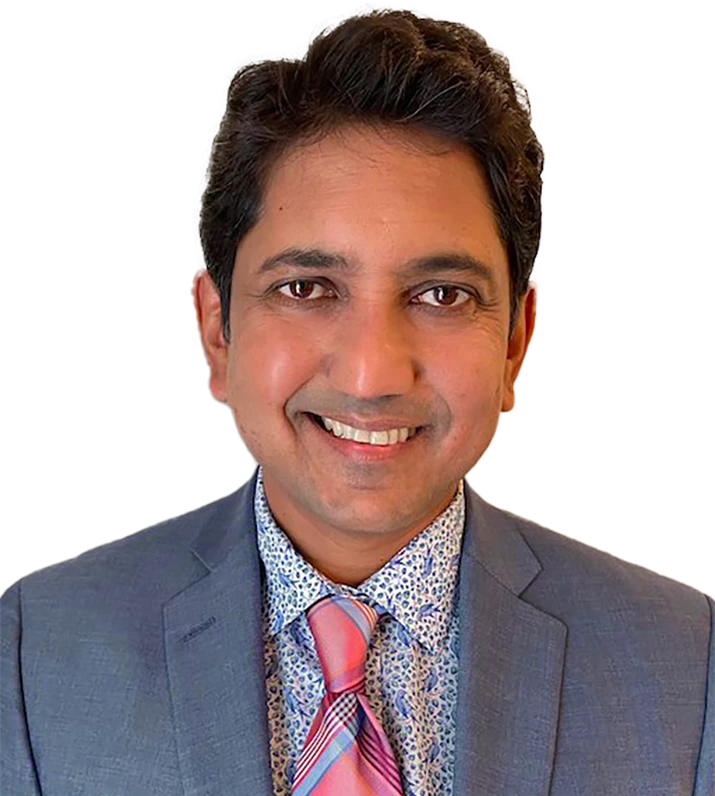
Having held positions at Motorola, Nokia and Alcatel during his 24+ year career in the mobile phone industry, Prakash Moorut has extensive experience in the field of RF transmission regulation.
He joined Shure in 2021 to set up a team to work on frequencies and regulation in general.
Guillaume Mascot completes the team, bringing his extensive experience, acquired at Alcatel and Nokia, to the regulatory and public policy work with European institutions and in the Asia-Pacific zone.
SLU : Shure has a dedicated RF regulatory department that’s impressive, doesn’t it?
Prakash Moorut : The problem of frequencies is not just a French or European one. It’s a global problem. With a growing number of requirements, as we shall see, and the arrival of WMAS technology, the availability of frequency bands for the proper deployment of our systems is critical worldwide. We now have a global team in Mexico, England, China, India, Mexico, Dubai and the USA, which I coordinate.
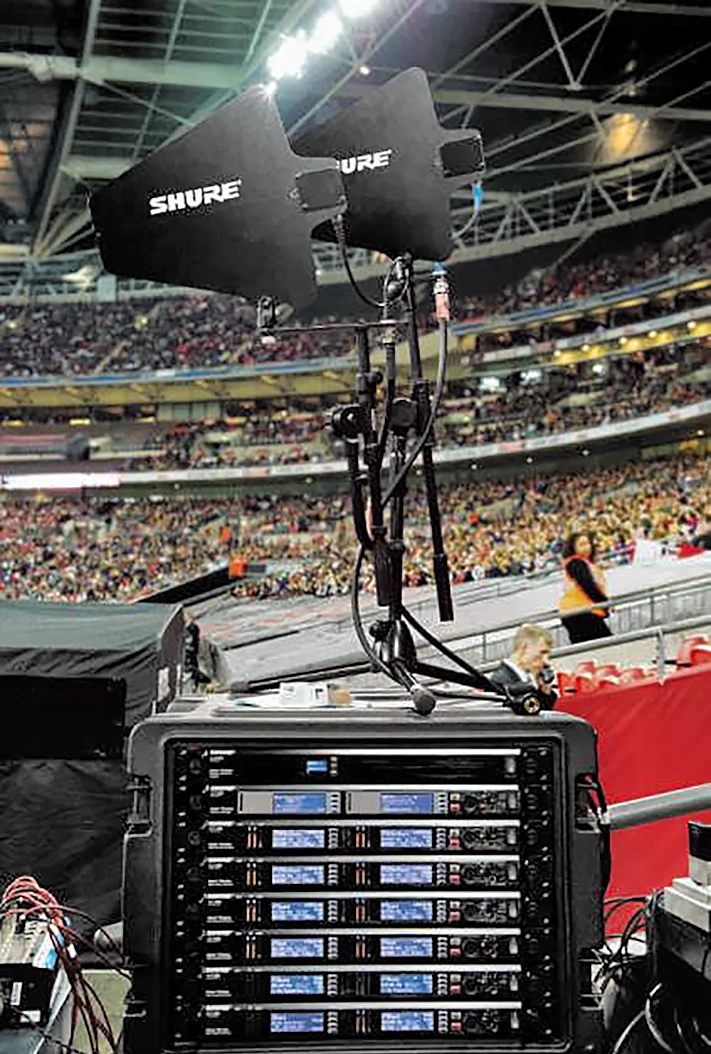
SLU : What are your main frequency challenges?
Prakash Moorut : As you know, over the years we have lost frequency bands from 470 MHz to 1 GHz to mobile phones. My role now is to raise awareness among legislators that we can’t afford to lose any more.
In the USA, we’re aware of these issues, because in 2017, the 614 to 698 MHz frequency band was put up for auction and we lost it. What’s more, the remaining frequency bands are also used by broadcast TV.
We then realized that for major events like the Super Bowl, or any other large-scale sports competition, we were having trouble finding the necessary frequencies.
SLU : And in France, was there a problem with frequencies for the Olympic Games?
Prakash Moorut : Yes, in the exact same way. We didn’t have enough frequency space in the 470 to 694 MHz band to meet our needs. So, for the Paris Olympics, two additional frequency bands were specially allocated by ANFR: 1240 to 1260 MHz and 1350 to 1400 MHz.
Thomas Delory : Some of these frequency bands are used by French airport radars. We therefore supplied ANFR with an Axient Digital system specially shipped from Japan, so that ANFR could carry out compatibility tests next to Bordeaux airport, to assess the risk of interference to radars and vice versa. ANFR has not reported any interference. These new temporary bands will be used during the Olympic Games with Shure equipment, particularly for the Asian delegations.

SLU : What steps have you taken to overcome this lack of available frequencies?
Prakash Moorut : We have asked the FCC to stop auctioning off frequencies in the remaining 470 to 608 MHz band. This will also enable the use of broadband technologies, including the new WMAS systems soon to be marketed, which can work with a bandwidth of 6 MHz in the 470 to 608 MHz band in the USA, and up to 20 MHz in other bands, compared with the narrow bandwidth of conventional 200 kHz systems.
SLU : 20 MHz is a lot of bandwidth…
Prakash Moorut : Our goal is to gain access to other frequency bands close to the current range (470-694 MHz). The 1.2 GHz and 1.4 GHz bands are particularly appealing to us. Since they are close to the existing bands, they are similar in terms of propagation and would allow us to obtain more available space. This makes them very attractive for future WMAS systems, which will be able to exploit their full bandwidth.
SLU : Wouldn’t new frequency bands be a better solution?
Prakash Moorut : Our goal is to gain access to other frequency bands close to the current range (470-694 MHz). The 1.2 GHz and 1.4 GHz bands are particularly appealing to us. Since they are close to the existing bands, they are similar in terms of propagation and would allow us to obtain more available space. This makes them very attractive for future WMAS systems, which will be able to exploit their full bandwidth.
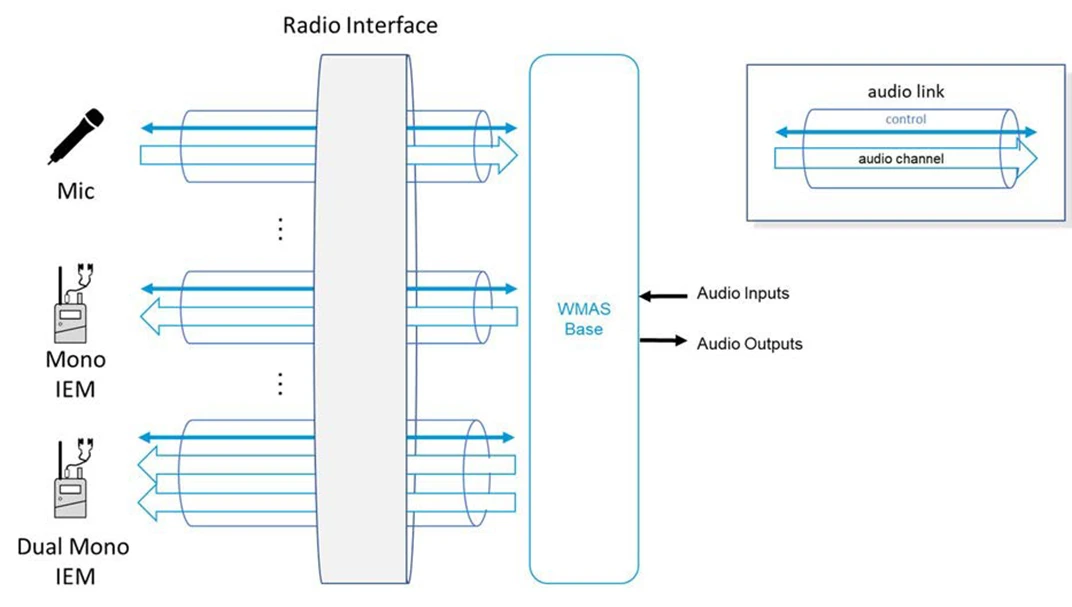
SLU : Does WMAS technology offer manufacturers considerable flexibility in terms of their own interpretations?
Prakash Moorut : We have a very global and diversified approach to the use of this new technology. In 2019, the WMAS specifications were established at ETSI, mainly by a group of manufacturers. In simple terms, these specifications define a spectral mask, a power limitation and a bandwidth.
What goes inside is up to the manufacturer and will depend on the specific brand. As a result, there will be some differentiation on the market, and professionals will be able to choose the system(s) that they find most convincing and best suited to the RF project they have to implement.
SLU : Does Shure already have prototypes?
Prakash Moorut : Yes, we’ve already done some tests at the Super Bowl, which were very impressive. It was really beyond our expectations.
SLU : So the regulations had to be changed to allow them to operate?
Prakash Moorut : Yes, the 200 kHz narrowband limitation associated with PMSE Audio was lifted to allow WMAS systems to operate. Then it was up to the regulators to allow us to deploy the systems.
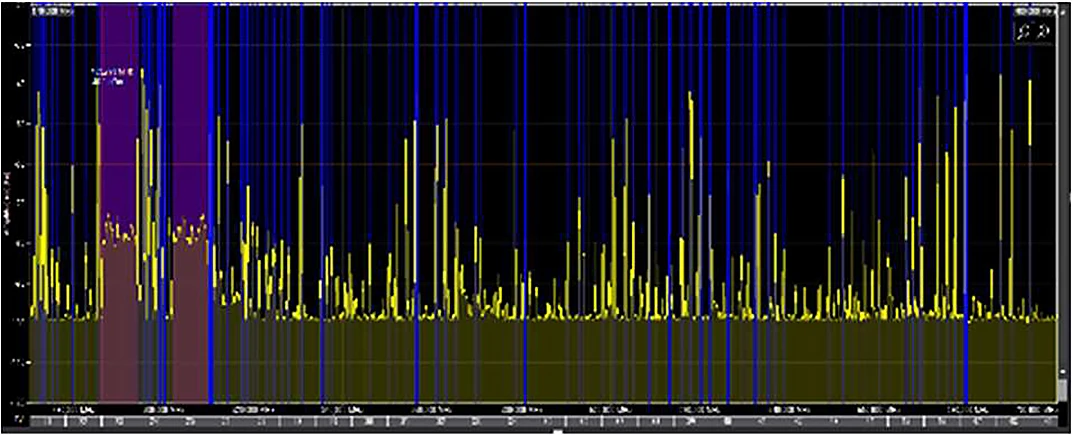
SLU : License-free?
Prakash Moorut : Initially, the FCC had imagined that WMAS systems would only be deployed for major events to manage hundreds of microphone links, and therefore only by users who purchased licenses. We explained that this would be complicated to implement, because already in the USA, 94% of our users don’t have licenses. This is also the case in many European countries. We want WMAS to be freely accessible.
SLU : And the wide bandwidth of the WMAS solution is not a problem?
Prakash Moorut : At Shure, we want to offer the greatest possible flexibility in the use of WMAS. Imagine you’re performing in Time Square, in an environment with a spectrum that’s already crowded with a huge number of TV channels. What’s more, conventional narrow-band wireless microphones will continue to coexist with these systems. So, finding a 6 MHz bandwidth in which to use WMAS, especially in the United States, is likely to be complicated.
If we only have 4 MHz available, for example, we’d love to be able to use our WMAS system. That’s why we’ve decided to offer this technology in our future products, with the option of reducing its bandwidth to 4, 2 or even 1 MHz, depending on the number of channels required, because you won’t need 6 MHz for every event. We have therefore specified this feature for regulatory purposes, as well as the increase in power.
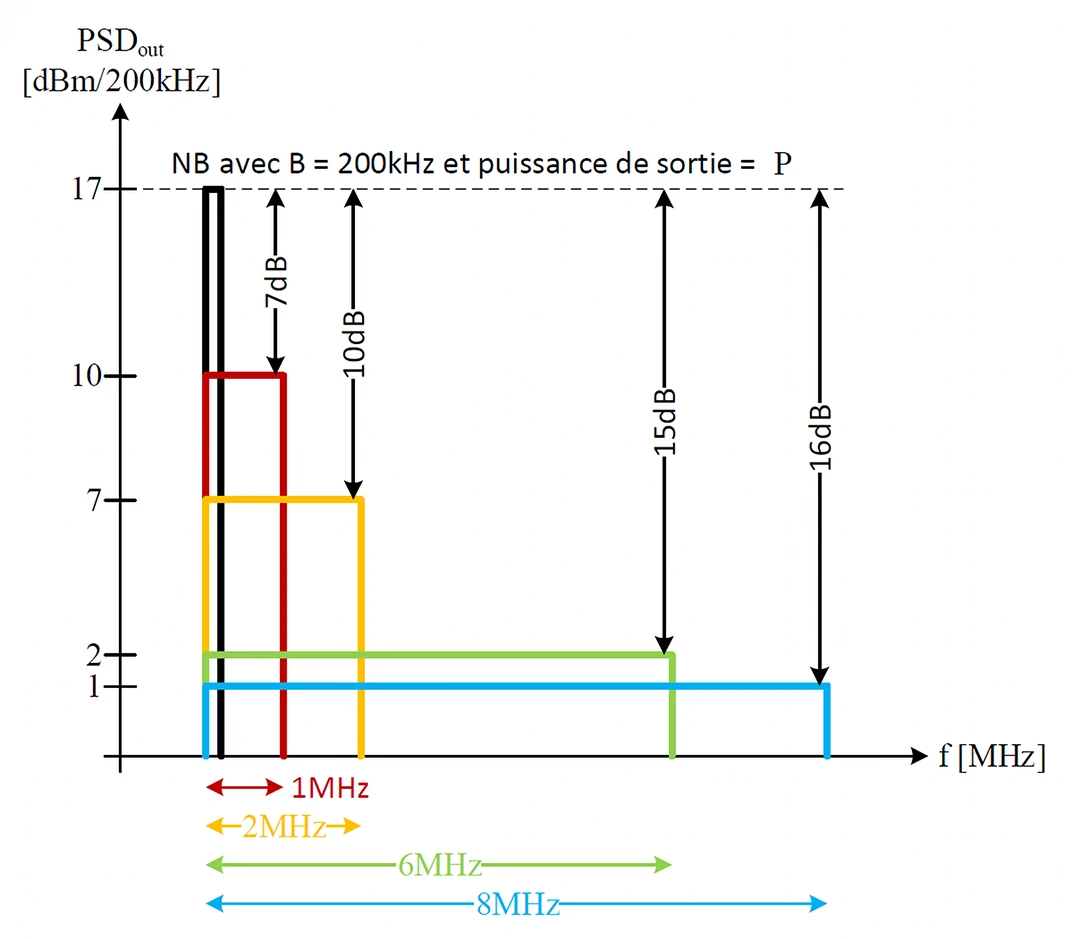
SLU : Is it important to have more power with a WMAS system?
Prakash Moorut : A WMAS system with a wide bandwidth of 6 to 8 MHz offers a theoretical gain increase (linked to the use of this wide band and the diversity of frequencies it allows) of several dB, extending the range.
In practice, we don’t always achieve these theoretical gains. And if we also reduce the bandwidth because we don’t need 6 or 8 MHz, or if 6 or 8 MHz are not available, we reduce the gain linked to the wide band.
It is therefore necessary to compensate for the bandwidth restriction by increasing the transmission power. We were able to demonstrate good performance by increasing the power from 50 to 100 mW, while coexisting with TV and traditional narrowband systems. We were able to obtain a license-free power limit of 100 mW from the FCC, and even up to 250 mW with a license. We can now rapidly deploy our new WMAS systems on the US market.

SLU : And in Europe?
Guillaume Mascot : We can now legally deploy a WMAS system in Europe. Since 2019, we no longer have the 200 kHz bandwidth restriction. The only current limitation throughout Europe is the 50 mW power limit.
We are now looking – in Europe as in the United States – to benefit from all the flexibility offered by the increase in power to 100 mW. We are currently working within CEPT at the European level, as well as with the regulatory authorities in each country, such as ANFR in France, BNetzA in Germany and OFCOM in the UK, to make this higher-power operation possible.
SLU : So we’re going to gain spectral efficiency?
Guillaume Mascot : WMAS technology will allow us to use the radio spectrum more efficiently, by allocating more channels to a single frequency band. We will also significantly reduce the intermodulation problems we encounter when using conventional narrow-band systems. We’ll be able to put the channels closer together.
But this may not be enough to cope with the increasing frequency requirements of using more and more wireless systems at the same event. That’s why we’re trying to open the 1.2 and 1.4 GHz frequency bands.

SLU : In Europe, we seem to be better protected than in the U.S.
Guillaume Mascot : In Europe, the 600 MHz band has given rise to the same problems as in the United States. In fact, every four years, new discussions take place on a worldwide level to allocate frequencies to a multitude of services (including mobile phone services). This takes place at a major international conference (WRC – World Radio Frequency Conference under the aegis of the International Telecommunications Union), the latest edition of which was held in December 2023 in Dubai.
We have secured a moratorium on this frequency band, which should last until 2031, or even 2033 in Europe. Nevertheless, other regions and countries have expressed their desire to allocate this band to cellular services. We need to be vigilant, and it’s vital for Shure to raise awareness of the importance of this frequency range. Given the very different configurations of TV channel requirements in the various European countries, we also realize that we need European coordination.
SLU : In reality, conditions can vary greatly from one country to another, no?
Guillaume Mascot : The Middle East and Africa use a lot of frequencies for TV, because these countries have little cable infrastructure. By contrast, Middle Eastern countries such as the United Arab Emirates don’t use many microwave links for TV. They have decided to use this band for 5G. Another example is Nigeria, which has decided to utilize this band for future 5G uses, but have they considered the thousands of wireless microphones used by the very many houses of worship across the country?
SLU : So we need to make regulators aware of the importance of the PMSE sector?
Guillaume Mascot : Yes, there’s still a lot of work to do in terms of raising awareness and explaining how to keep our wireless systems running smoothly. As far as I’m concerned, the work starts at the European level and involves raising awareness among the players in the world of cultural affairs. At the national level, we interact with ministries such as industry and culture, as well as with ARCEP (France’s Electronic Communications, Postal and Print media distribution Regulatory Authority), ANFR (Frances’s National Frequency Agency) and ARCOM (France’s Regulatory Authority for Audiovisual and Digital Communication).
SLU : How do you operate at the European level?
Guillaume Mascot : We work with the European Commission in consultations and as part of task forces on spectrum management. If one of our topics reaches the European Parliament, it’s our job to make parliamentarians aware of our issues. In addition to the European institutions, the European Conference of Postal and Telecommunications Administrations (CEPT) is central to our activities, and we play an active role in various working groups.
SLU : The economic angle must surely be very persuasive, no?
Guillaume Mascot : It needs to be made clear that, even if we don’t pay for the use of frequencies, the role of PMSE and its contribution to the cultural sphere is very important to economic development. The figures are significant, and the regulators understand them. In Asia, there is an increase in the number of large-scale events, music, shows and sports. The socio-economic impact of culture is very important.

For some cities and countries, it’s an important means of generating economic growth, and to do that, you need to be able to organize the events technically. The Olympic Games are a good example of this. This event gives us a good idea of the frequency issues facing the audiovisual world. All we can say to them is be careful, if you don’t have sufficient available space on the frequency spectrum, it’s going to make it difficult for you to host your next event.

SLU : Couldn’t we find a less crowded frequency band?
Guillaume Mascot : We are currently negotiating with ANFR and at the European level for the permanent availability of the 1.2 and 1.4 GHz band, which has been temporarily allocated for the Paris Olympics.
SLU : Wouldn’t it be ideal to have uniform frequency bands throughout the world?
Guillaume Mascot : This is what we often explain to regulators. Just as cellular operators manage to achieve uniformity, it would be nice if we could do it too. Opening the two new 1.x GHz bands while maintaining the existing ones should get us through in the long term. I remain optimistic.

SLU : WMAS will make it easier to manage more channels…
Guillaume Mascot : It’s going to be easier if we have frequency space available. On the other hand, we’ll be squeezing more audio channels into the same bandwidth. Efficient use of spectrum is a fundamental feature of the new technologies we are developing.
SLU : So, we’re talking about spectral efficiency?
Guillaume Mascot : Yes, exactly. Spectral efficiency is essential for us. Hence the importance of being able to manage smaller bandwidths in WMAS for optimum operation in the years to come. We need to be frugal with the spectrum, using only what we need – which is always the best approach and essential in the field. This also earns us more favorable consideration from regulators.
For example, broadcast studios in the USA didn’t want WMAS to be freely licensed, for fear that a system with a 6 MHz bandwidth would use up all their space and prevent them from operating other RF equipment in their studios. That’s why we decided to use a lower bandwidth. This will make it easier to use our systems, and has been appreciated by broadcasters and regulators, who have validated our approach to this technology.

SLU : So, the deployment of a WMAS system on a narrower band is essential in many cases?
Guillaume Mascot : Yes, especially if it must coexist with other conventional narrowband systems. If we’re occupying 6 MHz of WMAS bandwidth, what can we do?
As you can see, spectral economy is a very important point.
SLU : WMAS technology will make it possible to manage IEMs and wireless microphones on the same system?
Thomas Delory : Yes, this will be possible. But it will inevitably have an impact on other system parameters, like transmission power and latency.
SLU : Isn’t it about time for in-ear monitors to go digital?
Thomas Delory : That’s what everybody in the industry wants, a very high-priority demand. Monitor engineers would like to simplify their lives on major tours. As of now, the entire audio system is digital, except for the ear monitors, which are still analog for technical reasons, mainly latency. It’s a bit of a blot on the landscape. When will we go fully digital? That’s what the professionals are asking for, and we’re not far from achieving it.
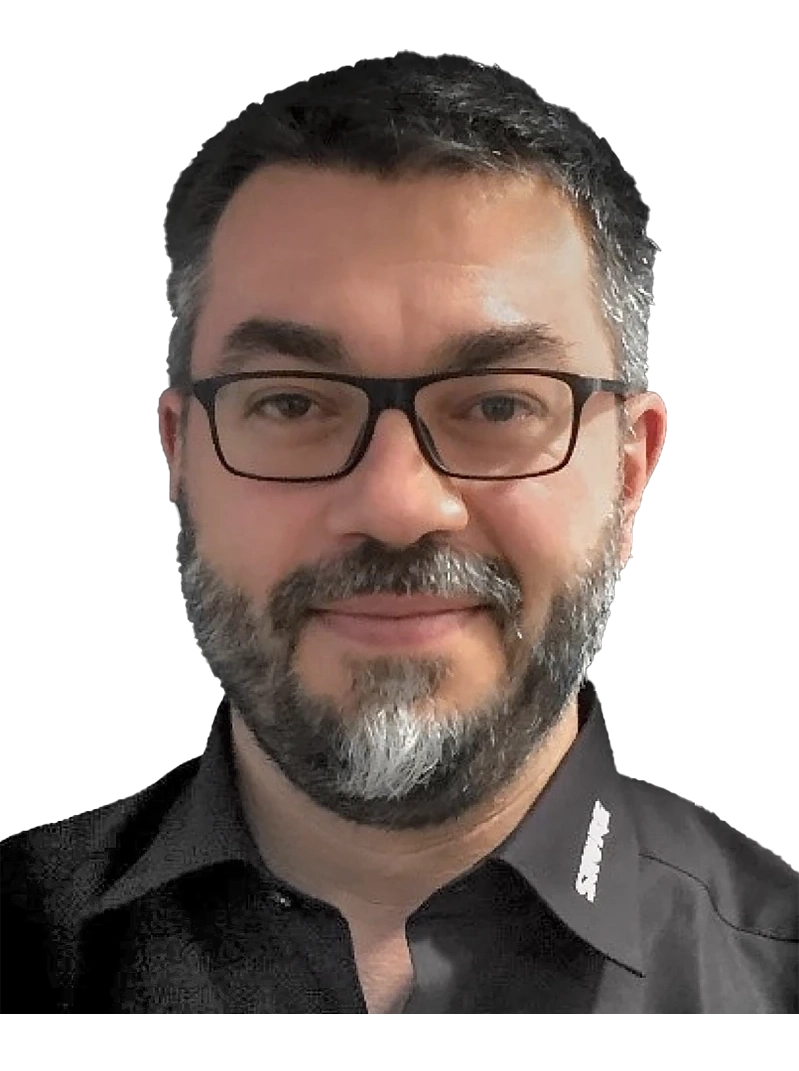
SLU : Is WMAS technology able to simplify everything?
Thomas Delory : WMAS is not a miracle solution to frequency problems. It’s a new technological area with a broad but well-defined scope, which lets manufacturers develop new technical solutions that allow the user to exploit more channels in a restricted frequency space. It was not initially conceived as a response to spectrum scarcity, but in today’s context it is becoming an attractive solution.
It’s not a definitive or exclusive answer to the high demand for channels, but it will help us manage the situation more effectively. Our team’s work on frequency regulations is part of a general approach to protecting our customers’ tools, which is not directly linked to WMAS but to all the technologies we use.
SLU : Nonetheless, WMAS will allow you to manage many more channels, no?
Thomas Delory : Sure, but it won’t necessarily be economically viable to use WMAS in small or medium-sized applications with the first commercially available solutions. For a project with 10 or 12 microphone channels, a classic narrow-band system that works very well will still be the appropriate solution for this type of job. However, for larger events, WMAS will simplify technicians’ lives by reducing handling, truck weight, working space and power consumption, not to mention the many technological advantages.

SLU : Is this going to be a real revolution in the RF world?
Thomas Delory : WMAS is set to transform the way shows are staged. Who’s going to use it first? Major shows, large events, and major sporting competitions. Let’s not forget that WMAS will be of great interest to the Americans, who have practically lost the 600 MHz band, and whose shows are of a much larger scale. Considering the space they have left around 500 MHz, a technology like WMAS will have a major impact.
For us, this technological advancement is also very important. If I could draw a comparison with a field I know well, it would be mixing consoles: the arrival of FPGA processors has changed the way digital consoles are used, offering enormous versatility in their implementation.
It’s a bit like that here: users will have access to tools that don’t have a fixed configuration but can be adapted to the requirements and constraints of their day-to-day work. In any case, we’re only at the very beginning of a major technological shift in microphone technology, so yes, it’s quite revolutionary!
SLU : So, really, there is no exclusive solution in RF?
Guillaume Mascot : Shure’s aim is to explore all the possibilities of RF technologies. Some are more advanced than others. Some are less relevant, like 5G, but we’re not ignoring them.
SLU : Could we use 5G for audio links?
Guillaume Mascot : Shure is part of the 5G Media Action Group. We’re testing 5G for audio and video transmission. While the video results look promising, the audio results are rather disappointing due to latency issues. Maybe in the future we’ll have the quality of service we need for audio. We’re going to keep an eye on it.

SLU : On the other hand, DECT technology is a good example of development in your wireless systems?
Guillaume Mascot : We have a lot of equipment using this technology, which is very well suited to the needs of both fixed and corporate installations. The virtue of DECT is that it operates in other frequency bands and offers certain enhancements.
It also makes life much simpler for users. For example, the MXW NEXT 2 is an all-in-one wireless microphone system that can be set up, plugged in and working immediately, with no need to know anything about RF technology.
SLU : Could you go even further with this technology?
Guillaume Mascot : DECT is very well developed in Europe, because the regulations are well established. It’s more complex in Asia and in many other countries where regulations are still being modernized. The new DECT 2020 evolution opens this technology to the Internet of Things. It’s a very interesting and promising area for us.
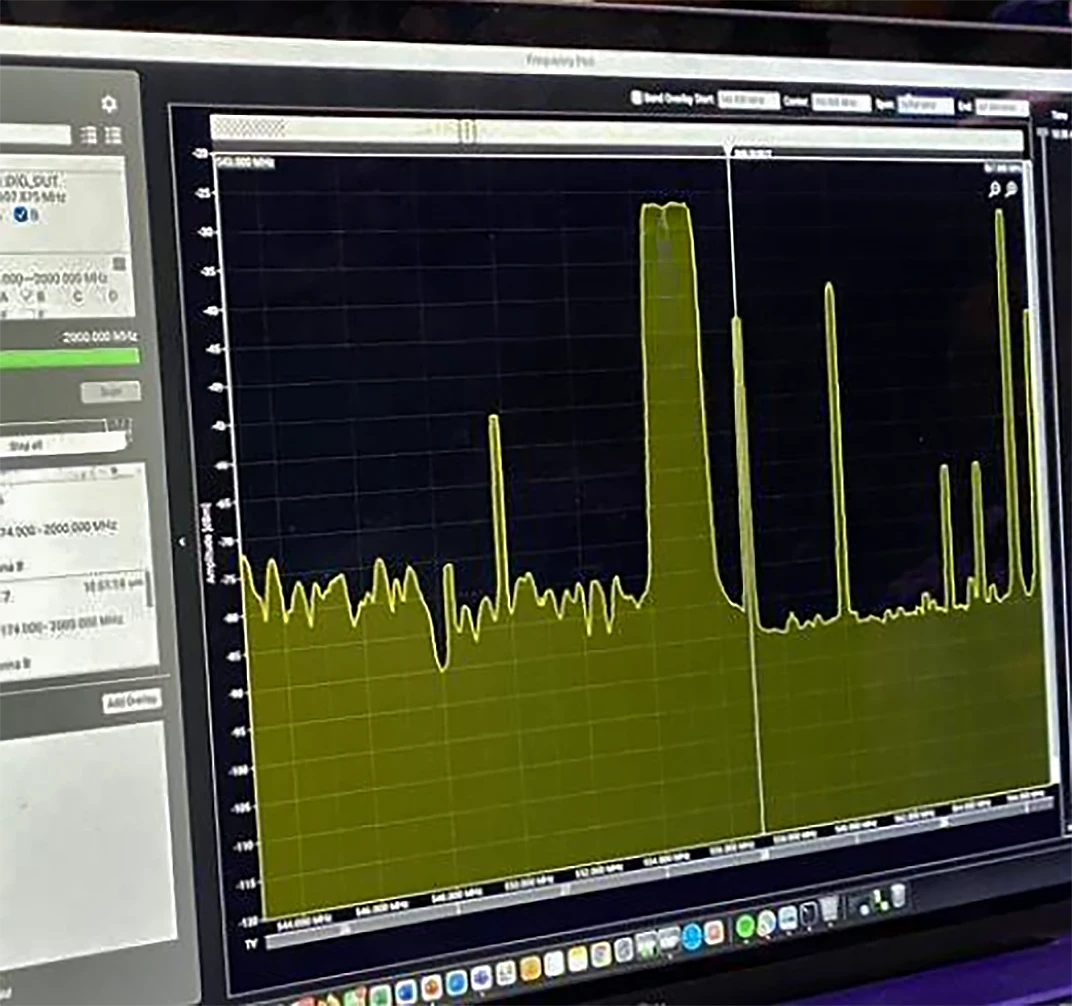
SLU : Do you think WMAS will eventually replace existing systems?
Thomas Delory : What would be the point of using a system that allows you to have a very large number of channels over a high bandwidth, while using only four or eight links? We’ll find out as we go along. It’s the users who’ll eventually decide.
Price won’t be the fundamental criterion for rental companies and large tour operators. Today, other systems work very well, and in France we haven’t lost the 600 MHz band. So, there’ll be no problem for the systems to coexist.
SLU : Maybe the first to use it will be broadcasters?
Thomas Delory : Shure digital wireless systems are becoming increasingly important in the broadcast market, thanks to the development of dedicated solutions. Our solutions were seen on TV sets during the arrival of the Olympic flame, and major Hollywood productions are now shot entirely using Shure.
Our main and historic market remains live sound, which is where we expect to see the first WMAS applications, but these solutions are bound to be carefully examined by broadcast operators.
SLU : To sum up, what are the primary avenues of development in wireless technology?
Guillaume Mascot : As for spectrum, our aim is to maintain UHF, develop the bands temporarily allocated for the Olympics and try to make those permanent. Of course, we’ll be introducing WMAS technology to the market and exploiting DECT2020, which will relieve frequency congestion and allow you to develop your own wireless network in a private space.

SLU : Are these really going to be battles for spectrum?
Thomas Delory : We must look for solutions wherever they are. To continue to offer a range of products that can be used in the best possible conditions for today’s shows, we need to think about other technological solutions like WMAS, as well as try to reclaim unused space on the frequency spectrum.
SLU : While still maintaining free access?
Thomas Delory : While frequencies are fairly harmonized across Europe, there are still differences between countries, and different license requirements. Each country decides to sell its frequency space as it sees fit. In the UK, for example, you must use and pay for dedicated licenses, which are still very affordable.
SLU : Do you advocate for free licensing?
Guillaume Mascot : We have both approaches, free or paid. It depends on the country and the situation. The main thing is to make sure we have dedicated spectrum. With our low emission levels, it’s not our wireless systems that create interference problems. We just want to make sure we have access to as many frequencies as possible, with as little disruption to our systems as possible.
SLU : What about the “spectral economy”?
Guillaume Mascot : This is a very important point for me. As much as we ask the public authorities to strike a balance and recognize the needs of our profession in general, we, as manufacturers and users, must also recognize the problems of frequency congestion and do our best to alleviate it in our day-to-day operations.
In any country in the world, it’s important to understand that frequency allocation policies, for cellular operators and others, have a direct impact on the technical execution of future cultural and creative events.
How can a country host the next World Cup, the next Olympic Games or the most popular artists, if its frequency space doesn’t allow the use of enough RF channels to ensure its technical success?
Even though Shure is developing its own vision of WMAS technology and investing in all existing wireless technologies to offer optimum spectrum efficiency, the company believes it is essential to work with national regulatory bodies to establish an international standard, to maintain the greatest possible operability of PMSE audio equipment in most countries around the world.
For further information, follow these links:









